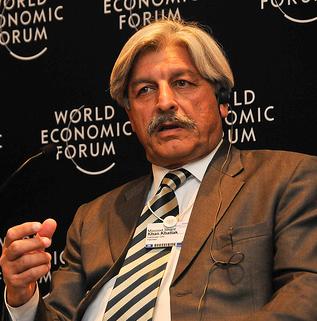The American drone attacks and other ill-advised offensive policies have acted as force multipliers for the Pakistani Taliban. But it must be said that Pakistan cannot put all the blame on the Americans because Pakistan itself has allowed the situation to get out of hand. Pakistan could have avoided being in the situation that it finds itself in today had Musharraf not thought that Washington’s support outweighed the support of the people of Pakistan.
The events of March 15-16, 2009, make clear that there is a new Pakistan that is progressive and fiercely independent. If this fact is not acknowledged by the US and the politicians of Pakistan the happenings of 1979 in Iran may well be repeated in Pakistan not long from now.
With a new administration in Washington Pakistanis hope for a new phase in US-Pakistan relations, which need to be built on an understanding by the US that Pakistan is a sovereign, dignified and self-respecting country that desires space to make its own decisions. Pakistan too will have to stand up on its own two feet and take upon its own shoulders the responsibilities of internal peace and the non-use of its territory for any aggressive act anywhere in the world.
There will be no point in any US secretary of state testifying before any US congressional committee in 2025 that they lost everything in southwest Asia because it was a mistake to have pushed Pakistan as much as the US actually did in the first decade of this century.
In 2000, Secretary of State Madeline K Albright had to say that “in 1953 the United States played a significant role in orchestrating the overthrow of Iran’s popular prime minister, Mohammed Massadegh. The Eisenhower administration believed its actions were justified for strategic reasons; but the coup was clearly a setback for Iran’s political development. And it is easy to see now why many Iranians continue to resent this intervention by America in their internal affairs.”
That coup was meant to fully empower the Shah of Iran by removing Massadegh and replacing him with a puppet prime minister working under the Shah. The man chosen by the Americans and the British to replace Massadegh was General Fazlollah Zahedi. But forty seven years later the US Secretary of State owned it as a major error on the part of the Eisenhower Administration because it alienated the Iranian people from the Americans. Twenty six years after that coup the Iranian Revolution took place. Even thirty years after the 1979 revolution the USA has still not been able to befriend the people of Iran again despite Madeline Albright’s admission that the US sponsored coup in Iran was a mistake.
What if Pakistan too goes the way Iran did in 1979–i.e., if the people of Pakistan, through a militant or political revolution, take control of the country? In 2025 or so, it will be fruitless for the US to regret its present obstinate persistence with the unjustifiable drone attacks in Pakistan, the exertion of the “do-more” pressure on successive Pakistani governments, hurling misplaced allegations on the Pakistani military establishment and the heavy manipulation of the Pakistani power politics. For the US the time to correct its faltering Pakistan strategy is now. If the US does not think so then there has to be something sinister to what we see happening within and around Pakistan?
The 1979 Iranian Revolution which ousted the US-favoured Shah of Iran and had him replaced by the anti-American supreme leader Ayatollah Khomeini was a total surprise to the CIA, the White House and the State Department. The US could not decipher the pre-1979 revolutionary undercurrents in Iran. The CIA could not identify the Iranian revolutionary movement from the point it started quietly, developed gradually and then took everything by storm. Just six months before the Iranian Revolution brought about the present day Iran the CIA told the US Government that Iran was neither in a revolutionary nor even in a pre-revolutionary situation. In 1979 the US went wrong in Iran and in 2009 they seem to be going wrong in Pakistan because much of what happened in undercurrents in Iran prior to the 1979 Revolution, but went unnoticed, may already have happened in Pakistan too over the last four decades. The writ of the State of Pakistan is collapsing steadily and the country is literally reeling under terrorist attacks beng conducted with obnoxious impunity. Yet, the Interior Ministry with its present inept political and bureaucratic heads is clueless about handling the gigantic dangers posed to the very existence of Pakistan.
On 27 Dec, 2007, and again on 16 March, 2009, the situation in Pakistan could have gotten out of hand. 16 March, 2009, can recur at the spur of a moment in a country as eruptive as Pakistan. In all probability, there will be no long term warning of the impending eruption. So is it not time for the US to understand, realistically, the inner dynamics of the Pakistani nation and redefine its Pakistan policy and also let Pakistan sort out its own mess on its own terms and conditions. After all it is Pakistan’s own integrity and existence that is now at stake. Or does the CIA still think that Pakistan is not a country which was either in a revolutionary or even in a pre-revolutionary mood, as it did in Iran in 1979, just six months before the Iranian Revolution occurred and a new Iran came into being.
If the US faces a setback in Pakistan like it did in Iran in 1979 it may never be able to stage a diplomatic comeback because the regional power dynamics of the area would have changed dramatically. The US should, therefore, sincerely befriend the people of Pakistan wholeheartedly rather than toy with its internal political dynamics.
http://www.thenews.com.pk/editorial_detail.asp?id=173875
